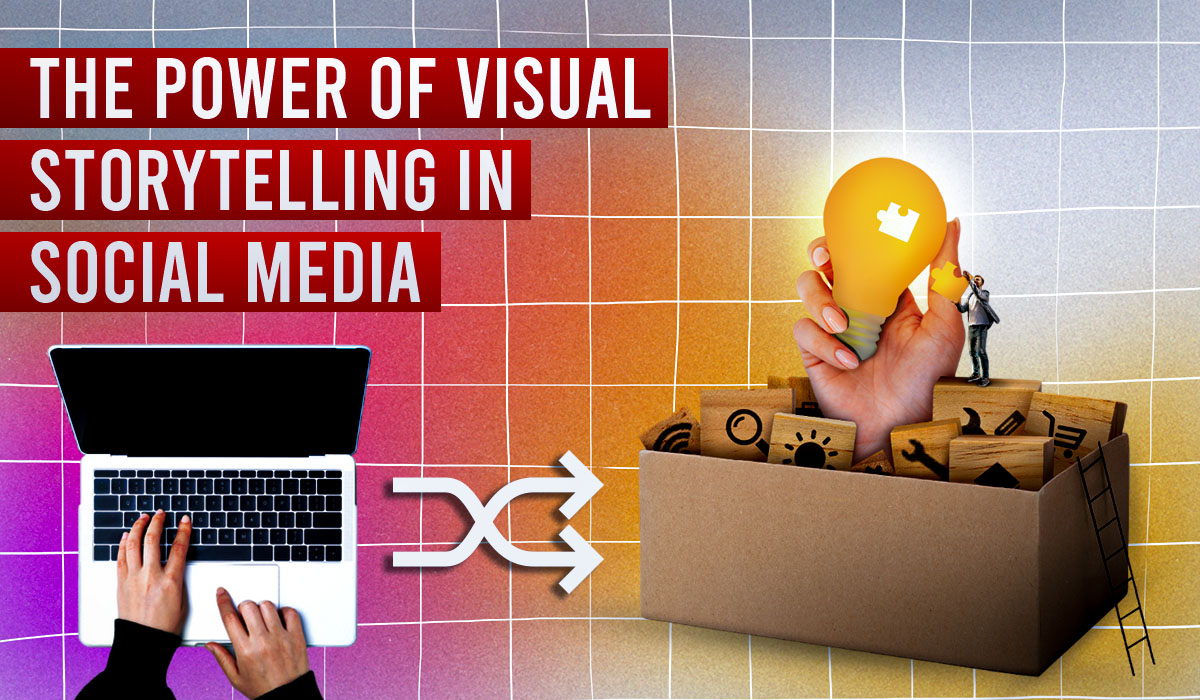Blog Our Thought.
The Power of Visual Storytelling in Social Media

In the fast-paced world of social media, capturing your audience’s attention is a daunting task. Amidst the sea of content, how do you ensure your message stands out? The answer lies in the power of visual storytelling. By combining compelling visuals with engaging narratives, you can create a lasting impact on your audience. Here’s why visual storytelling is essential for social media and how to leverage it effectively.
Why Visual Storytelling Matters
Captures Attention Quickly: In the digital age, the average attention span is dwindling. Visual content is processed 60,000 times faster than text, making it the perfect medium to grab attention. A striking image or an engaging video can halt the endless scroll, encouraging users to pause and engage with your content.
Enhances Emotional Connection: Visuals have a unique ability to evoke emotions. A well-crafted story can make your audience feel joy, surprise, sadness, or inspiration, fostering a deeper connection with your brand. Emotional engagement is crucial for building brand loyalty and encouraging shares and interactions.
Improves Information Retention: People remember 80% of what they see and do, compared to just 20% of what they read. By using visuals to tell your story, you ensure your message is not only seen but remembered. This improved retention can lead to better brand recall and recognition.
How to Leverage Visual Storytelling on Social Media
Know Your Audience: Understanding your audience is the first step in creating compelling visual stories. Research their preferences, behaviors, and pain points. Tailor your content to address their needs and interests, ensuring it resonates with them on a personal level.
Create a Strong Narrative: A powerful visual story starts with a strong narrative. Decide the message you want to convey and build a storyline around it. Ensure your narrative has a clear beginning, middle, and end. This structure helps in maintaining the flow and keeping your audience engaged.
Use High-Quality Visuals: The quality of your visuals can make or break your story. Invest in high-resolution images, professional photography, and well-produced videos. Poor-quality visuals can undermine your message and turn your audience away.
Incorporate Brand Elements: Your visual stories should reflect your brand’s identity. Use consistent colors, fonts, and logos to reinforce brand recognition. This consistency helps in creating a cohesive brand image and makes your content easily identifiable.
Leverage User-Generated Content: User-generated content (UGC) is a powerful tool for visual storytelling. Encourage your followers to share their own stories and experiences with your brand. UGC not only provides authentic content but also fosters a sense of community and trust.
Utilize Different Formats: Diversify your content by using various formats such as images, videos, infographics, and GIFs. Each format has its own strengths and can be used to tell different parts of your story. Videos, for example, are great for detailed storytelling, while infographics can simplify complex information.
Engage with Interactive Content: Interactive content like polls, quizzes, and augmented reality (AR) filters can make your visual stories more engaging. They encourage audience participation, making your content more memorable and impactful.
Analyze and Optimize: Regularly analyze the performance of your visual stories. Use social media analytics tools to track engagement, reach, and conversions. Identify what works and what doesn’t, and continuously optimize your content strategy based on these insights.
Conclusion
Visual storytelling is a powerful tool that can elevate your social media presence. By capturing attention, evoking emotions, and improving information retention, it helps in building a strong connection with your audience. Remember to create high-quality visuals, maintain a consistent brand identity, and continuously engage with your audience. With these strategies, you can harness the power of visual storytelling to create impactful and memorable social media content.